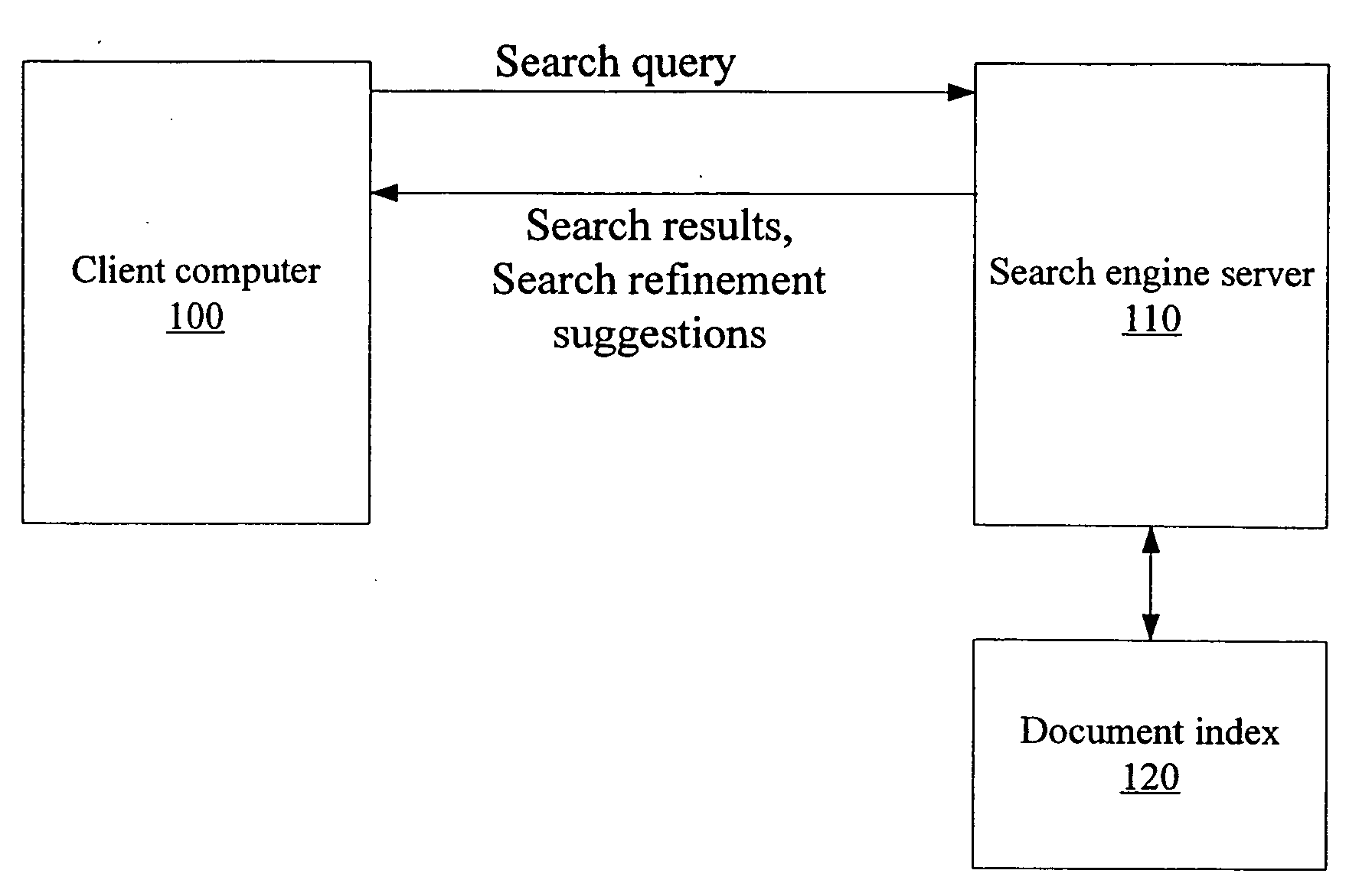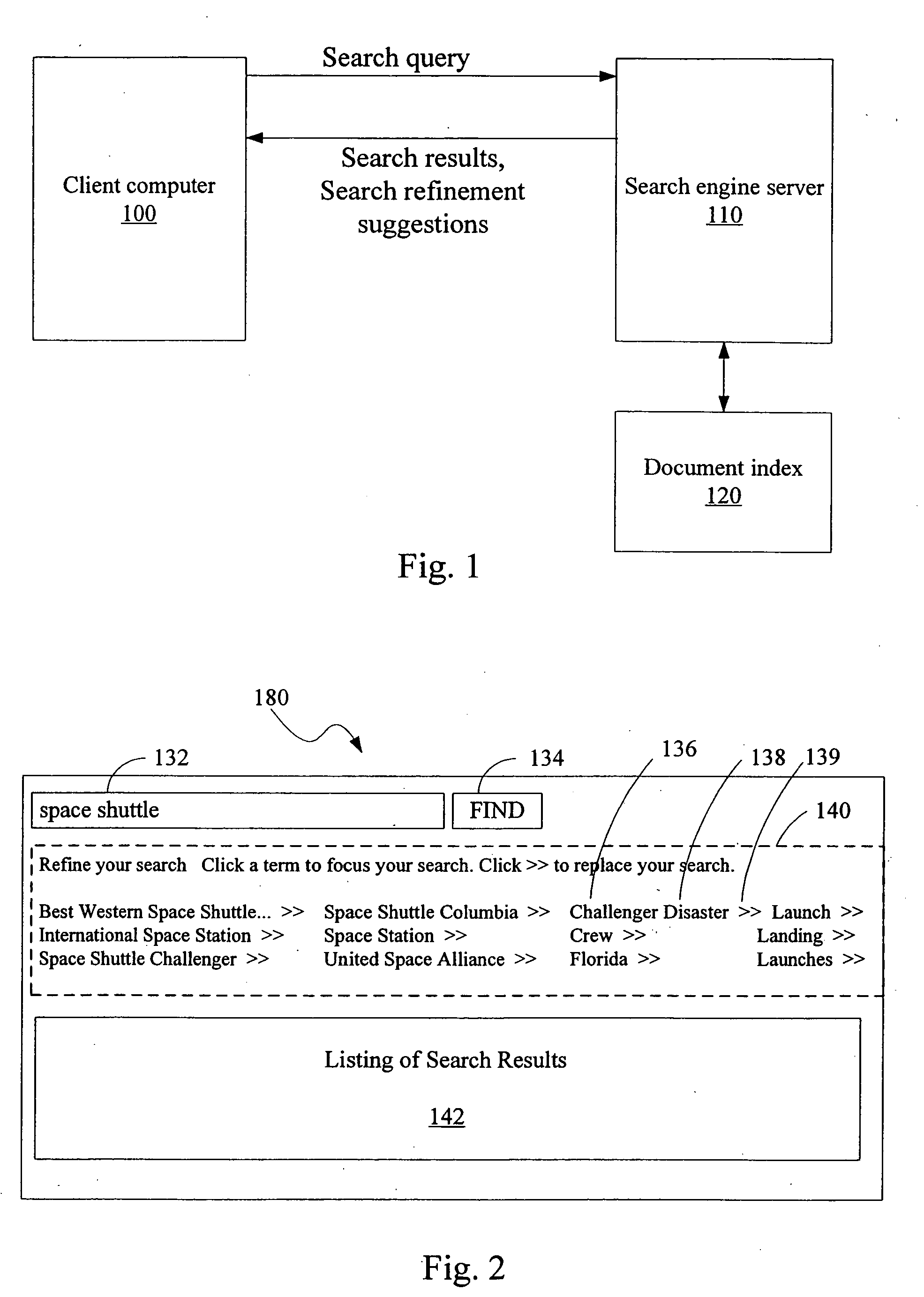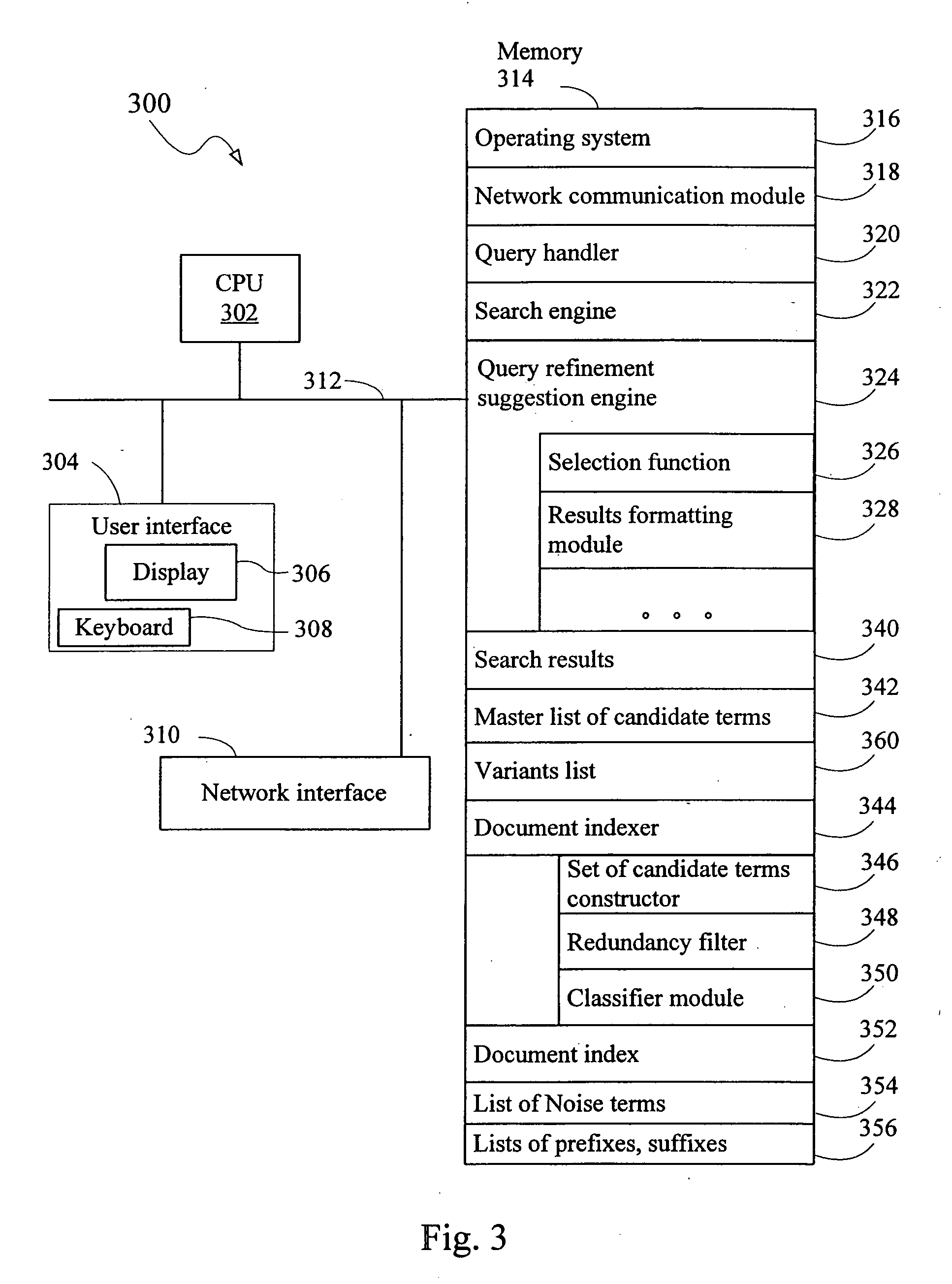Systems and methods for interactive search query refinement
a search query and interactive technology, applied in the field of search engines, can solve the problems of difficult cognitive task for text search engine users, broad search queries cannot satisfy the more specific information desires of many different search engine users, and cannot guarantee that the related terms generated actually reflect the subject matter or vocabulary used within the corpus of documents, and achieve the effect of less i/o resources
- Summary
- Abstract
- Description
- Claims
- Application Information
AI Technical Summary
Benefits of technology
Problems solved by technology
Method used
Image
Examples
Embodiment Construction
[0050] In a typical embodiment, the present invention generates, in an efficient manner, a small set (10-20) of query refinement suggestions (subset of candidate terms) that are potentially highly relevant to a user's query and reflect the vocabulary of target documents.
[0051] As shown in FIG. 1, a search query is submitted by a client computer 100 to a search engine server 110. Upon receiving the search query, search engine server 110 identifies documents in document index 120 that are relevant to the search query. Further, search engine server 110 ranks the relevant documents by, for example, their relevance to the search query among other ranking factors. A description of this group of ranked documents (search results) is then returned to client computer 100 as a group of ranked documents. In the present invention, additional information, in the form of a subset of candidate terms (search refinement suggestions), is returned to the client computer along with the initial group of...
PUM
 Login to View More
Login to View More Abstract
Description
Claims
Application Information
 Login to View More
Login to View More - R&D
- Intellectual Property
- Life Sciences
- Materials
- Tech Scout
- Unparalleled Data Quality
- Higher Quality Content
- 60% Fewer Hallucinations
Browse by: Latest US Patents, China's latest patents, Technical Efficacy Thesaurus, Application Domain, Technology Topic, Popular Technical Reports.
© 2025 PatSnap. All rights reserved.Legal|Privacy policy|Modern Slavery Act Transparency Statement|Sitemap|About US| Contact US: help@patsnap.com



